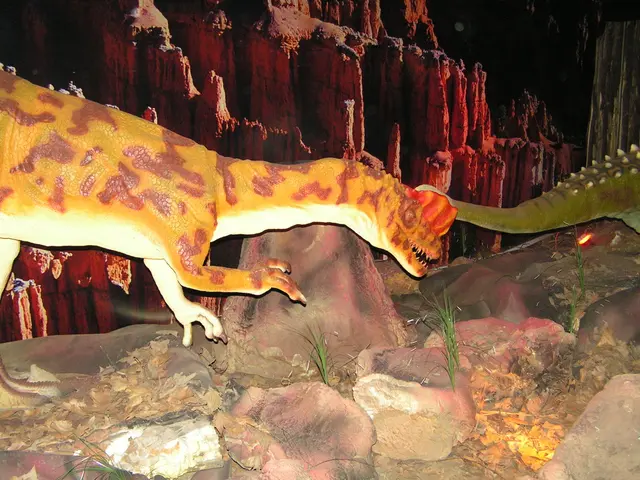Uncovering Trends and Shifts: An Examination of Recurring Designs
Infants and children progress through various grasp patterns as part of their fine motor development, each stage playing a crucial role in their overall growth. Here's a guide to the typical stages of grasp patterns and activities to support their development:
### 1. **Palmar Reflex Grasp (Newborns to 6 Months)** - **Stage:** This is an involuntary reflex where infants clench their fingers when their palm is stroked. It does not involve the thumb and fades by about six months. - **Activity:** Gently stroke the infant's palm with your finger to elicit the reflex, fostering caregiver-infant interaction.
### 2. **Ulnar Palmar Grasp (Around 4 Months)** - **Stage:** Babies can hold objects using the pinky side of their hand with a couple of fingers loosely wrapped around it, but without using the thumb. - **Activities:** Provide toys that are easy to grasp, like soft blocks or large, soft balls, to encourage intentional grasping.
### 3. **Palmar Grasp (Around 5 Months)** - **Stage:** The whole hand is involved, but the thumb is not used for support. The baby holds objects in the center of their palm with all fingers. - **Activities:** Offer toys with different textures and sizes to stimulate interest and practice grasping.
### 4. **Radial Palmar Grasp (Around 6 Months)** - **Stage:** Babies start using their thumb for support, beginning to pick up larger items more precisely. - **Activities:** Introduce larger toys or objects that require more control, such as stuffed animals or small pillows.
### 5. **Raking Grasp (Around 9-10 Months)** - **Stage:** Babies use all their fingers to sweep and pick up objects, often resulting in fingers and palm getting full of material. - **Activities:** Provide small objects one at a time or spaced apart to encourage more precise grasping.
### 6. **Pincer Grasp (Around 10-12 Months)** - **Stage:** Babies begin to use the thumb and index finger to grasp small objects. - **Activities:** Offer small toys or pieces of food that require precise grasping, such as Cheerios or small cubes of bread.
## Supporting Grasp Development
To support these developmental stages, engage your child in play activities that encourage reaching, grasping, and manipulating objects. Here are some general tips:
- **Variety of Toys:** Use a variety of toys with different sizes, textures, and shapes to keep your baby interested and engaged. - **Practice Sessions:** Regular play sessions can help build fine motor skills and strengthen grasp development. - **Accessibility:** Ensure that toys are within reach but not too easy to grab, challenging your child to improve their grasp. - **Encourage Exploration:** Allow your child to explore different ways of holding objects, which helps refine their grasp.
By following these stages and activities, you can effectively support your child's grasp development and overall fine motor skills. As they grow, they will progress through more advanced grasp patterns, such as the dynamic tripod grasp, lateral pinch, and hook grasp. Understanding these patterns is essential for developing finger strength exercises for fine motor tasks.
- In the realm of environmental science, it's crucial to study the effects of climate change on various ecosystems and the biodiversity within them.
- Medical-conditions like chronic kidney disease, COPD, type-2 diabetes, and rheumatoid arthritis require constant monitoring and management as part of a comprehensive health-and-wellness plan.
- Nutrition plays a vital role in aging healthily, making it essential to maintain a balanced diet rich in fruits, vegetables, lean proteins, and whole grains.
- Space-and-astronomy often engages the public's interest, but scientific exploration of the cosmos goes beyond just stargazing, delving into realms like astrobiology and cosmology.
- CBD products are being investigated for potential therapeutic benefits, particularly in managing neurological disorders like epilepsy and multiple sclerosis.
- Aging also presents challenges in the realm of mental health, with disorders like depression and anxiety becoming more common as individuals grow older.
- Fitness-and-exercise routines can help manage chronic diseases, such as reducing the risk of complications from Type 2 Diabetes or lowering the symptoms of COPD.
- Cancer research constantly evolves, with advancements in treatment options like immunotherapy and new approaches to early detection helping save countless lives.
- Lastly, educating ourselves about the intricacies of our own bodies, including understanding conditions like chronic diseases and neurological disorders, instills respect for the marvel that is human biology and our capacity for adaptation and growth.







